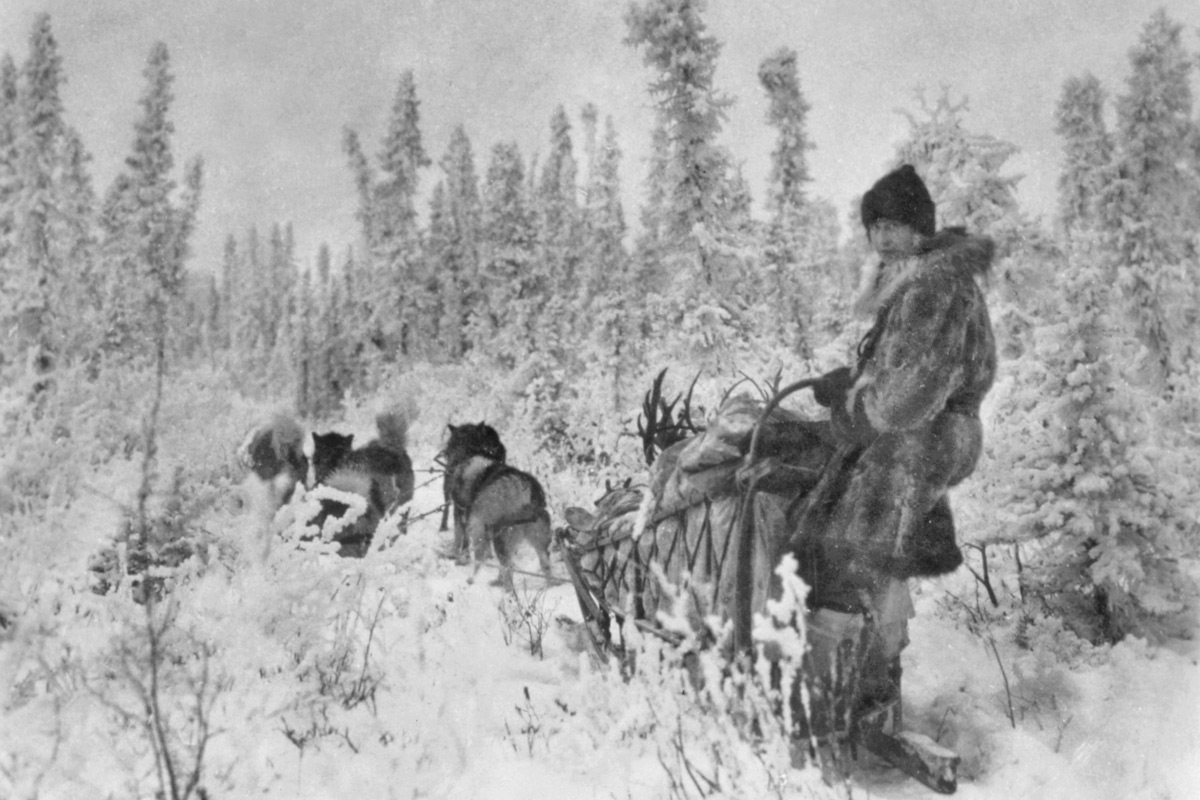Live Wild
Mardy Murie ’23 fought to create the Arctic National Wildlife Range.
Widely regarded as the matriarch of America’s conservation movement, Margaret “Mardy” Murie lived a devoted life close to the land. Born in 1902, Mardy Thomas grew up when Alaska truly was a frontier; mail was delivered by horse-drawn sled and people traveled by dogsled, not snowmobile. She was raised to conserve and respect this beautiful land of berries and caribou, salmon, and endless night and day. And always, she was driven by her curiosity and the understanding that there is more to be learned by listening than by talking.
Mardy came to Reed in 1919 and spent two years on campus (one of her classmates was James Beard ’24). Later she returned to Alaska and was the first woman to graduate from what is now the University of Alaska Fairbanks. She married biologist Olaus Murie and embarked on a working honeymoon of adventure on the Koyukuk River. Traveling by riverboat and, after freeze-up, dogsled, they followed the caribou to the mouth of the river at the foot of the Brooks Range. Two years later they spent a summer canoeing and banding geese on the Old Crow River in the Yukon with their newborn son, the first of many adventures raising their children in wildlands.
Mardy and Olaus danced their life across Alaska. They danced for the joy of it, for the exhilaration of sharing in this ever-giving land. As she said, “In the midst of these difficult times...you have to know how to dance.” The same love that inspired her to dance gave her the courage to protect the wilderness she called home. Mardy understood that in preserving wilderness, we preserve the best of ourselves.
The Muries organized a scientific expedition to the Sheenjek River in 1956 as a key step in their campaign to protect the northeastern part of Alaska. In 1962, Mardy published Two in the Far North, an influential memoir that generated crucial publicity. Later she testified before Congress about the importance of protecting wild spaces and planted the seed of a profound idea—to preserve an entire biome within an intact ecosystem: a vast expanse of ocean and tundra, rivers and lakes, fowl and mammals, untouched by human greed. The structural change she fought for resulted in broad success: designation of the Arctic National Wildlife Range (now Refuge) in 1960, passage of the Wilderness Act in 1964, then the Alaska National Interest Lands Conservation Act in 1980. Oil was found at Prudhoe Bay in 1968 and this, too, kept her vigilant. She wrote several more books and was awarded the Presidential Medal of Freedom in 1998 by President Bill Clinton.
Mardy wanted her great-grandchildren to be able to stand on the tundra and witness the same land she so loved. She fought tirelessly for them, and for all of us, to have this legacy of wild spaces. The question Mardy asked of herself rings true today: What, after all, are the most precious things in a life?
Tags: Alumni, Climate, Sustainability, Environmental, Sports & Adventures
